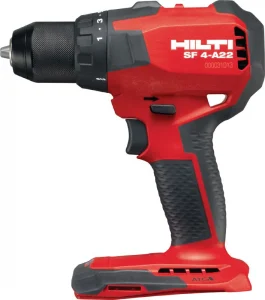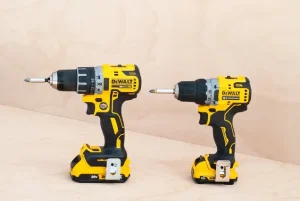Cabinet pulls are a great way to add style and functionality to your kitchen or bathroom cabinets. They can also be used on furniture and other rooms in your home. The hardest part of installing cabinet pulls is drilling the holes.
If you’re the DIY type, and you want to install your own cabinet pulls, here are several ways to drill holes for cabinet pulls.
Drill Holes for Cabinet Pulls – Different Methods
Use a Drill Press

Make sure that your drill press has a good fence so that you can position your work piece with precision. A fence that moves freely back and forth will allow you to position your work piece correctly easily when making multiple holes in a row.
A fence that’s too stiff could make it difficult for you to reposition your work piece properly when making multiple holes.
Drill With a Handheld Drill

An electric drill requires less force than a manual model, which makes it easier to control when drilling through thick materials like wood or metal. Electric drills also have more torque than manual models, which means they can make holes faster and with less effort.
There are two main types of electric drills – corded and cordless. Cordless drills use batteries that must be recharged after every use, while corded ones plug directly into an outlet.
Cordless models are better suited for home improvement projects because they’re easy to transport from room to room without having to unplug them from the wall each time you move them around your home.
Use an Angle Guide

To get around this issue, use an angle guide for drilling holes for cabinet pulls. This tool will help you keep your drill at a 90-degree angle as it cuts through your piece of wood or wall material.
Use a Spade Bit

Attach a Cordless Drill Guide
 If you’re going to be drilling holes for your cabinet pulls, it’s best to use a cordless drill and the right attachment.
If you’re going to be drilling holes for your cabinet pulls, it’s best to use a cordless drill and the right attachment.
A cordless drill is more convenient than an electric one because it has a battery that can be recharged. You don’t have to worry about where you plug it in or how far away you are from an outlet. In addition, cordless models tend to be lighter and easier to handle than their electric counterparts.
When choosing a cordless drill, make sure it includes a chuck key so you can tighten or loosen the bit when needed. The chuck key should fit into the chuck of the drill and allow you to tighten or loosen it by hand without having to use any other tools.
The first step is attaching the correct bit to your cordless drill. The size of the hole depends on what kind of pull you want and how deep your cabinet door needs to go through in order for it to fit properly.
If you’re using standard size cabinet pulls, then all you need is a 1/4-inch bit; however if you want larger pulls on your cabinets then consider using 3/8-inch bits instead since these would accommodate bigger holes without looking too oversized.
Use a Hole Saw

The blade has teeth along its edge that grip the material you’re cutting and rotate it so the hole can be made.
Use Clamps or a Clamping Jig

Clamping jigs come in two main varieties: those that clamp directly onto the work piece and those that use a separate clamping block. The former is more versatile because you can use it anywhere on your project, but it has a limited range of motion. The latter is more limited in its range of motion, but its clamps can be repositioned as needed.
The most common type of clamping jig is one that clamps directly onto your work piece with adjustable clamps that grip both sides of the piece.
These have an advantage over clamping blocks because they offer more versatility — you can use them anywhere on your project without having to worry about where your drill press’s collet will go through the hole when drilling from above. Another advantage is that they’re easy to make yourself!
Mark the Holes With an Awl or Punch

Drill pilot holes into the wood beneath the surface of the door. If you’re drilling through unfinished wood, use a carbide tipped bit to avoid splintering. If you’re drilling through finished wood, use a regular spade bit.
Be cautious when drilling through finished wood as it is more prone to cracking than unfinished wood.
Test fit the cabinet pull before inserting screws into the pilot holes you have drilled into the door frame by hand. This will ensure that everything fits together properly before continuing with your installation.
Use a Power Drill with a Forstner Bit

Forstner bits have an oversize center point that’s used to create clean, flat-bottom holes by pulling the bit through the work piece while it cuts away material on all sides at once, leaving very little tear out.
They’re ideal for drilling holes for cabinet pulls because they don’t require much force to use, making them less likely to slip out of place while you’re drilling and possibly damage your cabinets or other surfaces nearby.
Drill From Both Sides of the Work Piece Using Two Drills at Once
 If you’re drilling a hole for a cabinet pull, it’s best to drill from both sides of the work piece at once. This will give you more control over where the center of your hole is, as well as make sure it’s straight.
If you’re drilling a hole for a cabinet pull, it’s best to drill from both sides of the work piece at once. This will give you more control over where the center of your hole is, as well as make sure it’s straight.
To do this, first mark the location where you want your hole to be on one side of your cabinet. Then, flip the cabinet over and mark a line on the other side where you want the hole to be.
You can use a pencil or marker or make a marking on your drill bit with some masking tape (you can also use that same masking tape to mark off your drill bit size).
Next, clamp down your work piece so that it doesn’t move while you drill. You can also use two clamps if necessary — just make sure they don’t get in the way of where you’re going to be drilling! Then place one drill bit into each drill chuck and proceed with drilling from both sides simultaneously.
Final Thoughts
Sometimes, you need to drill holes in your cabinet face frame or cabinet back for a new pull, or you want to add an additional hole to accommodate a different style of pull. The good news is that there are several ways to create the hole you need and this article provides you with several.

